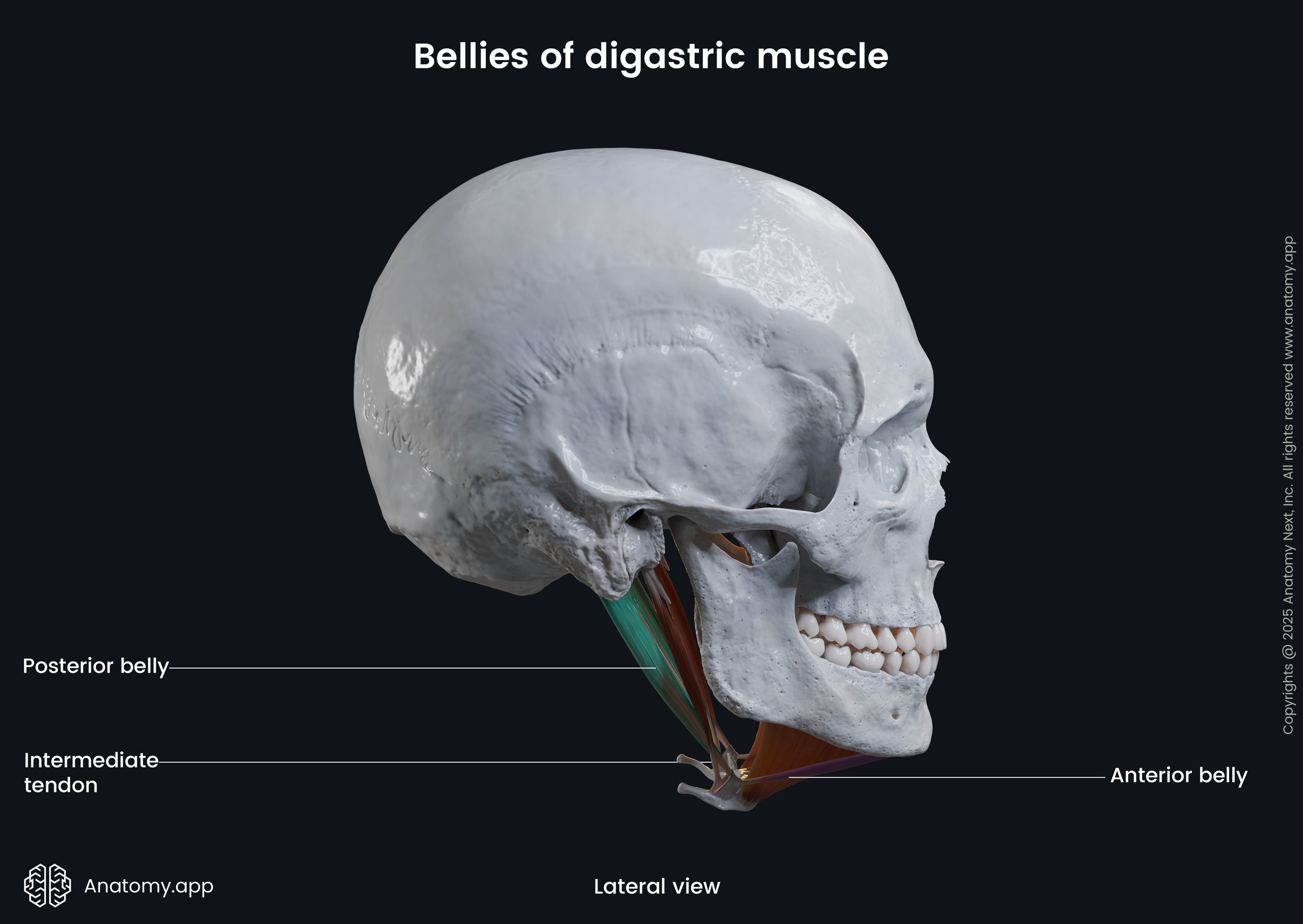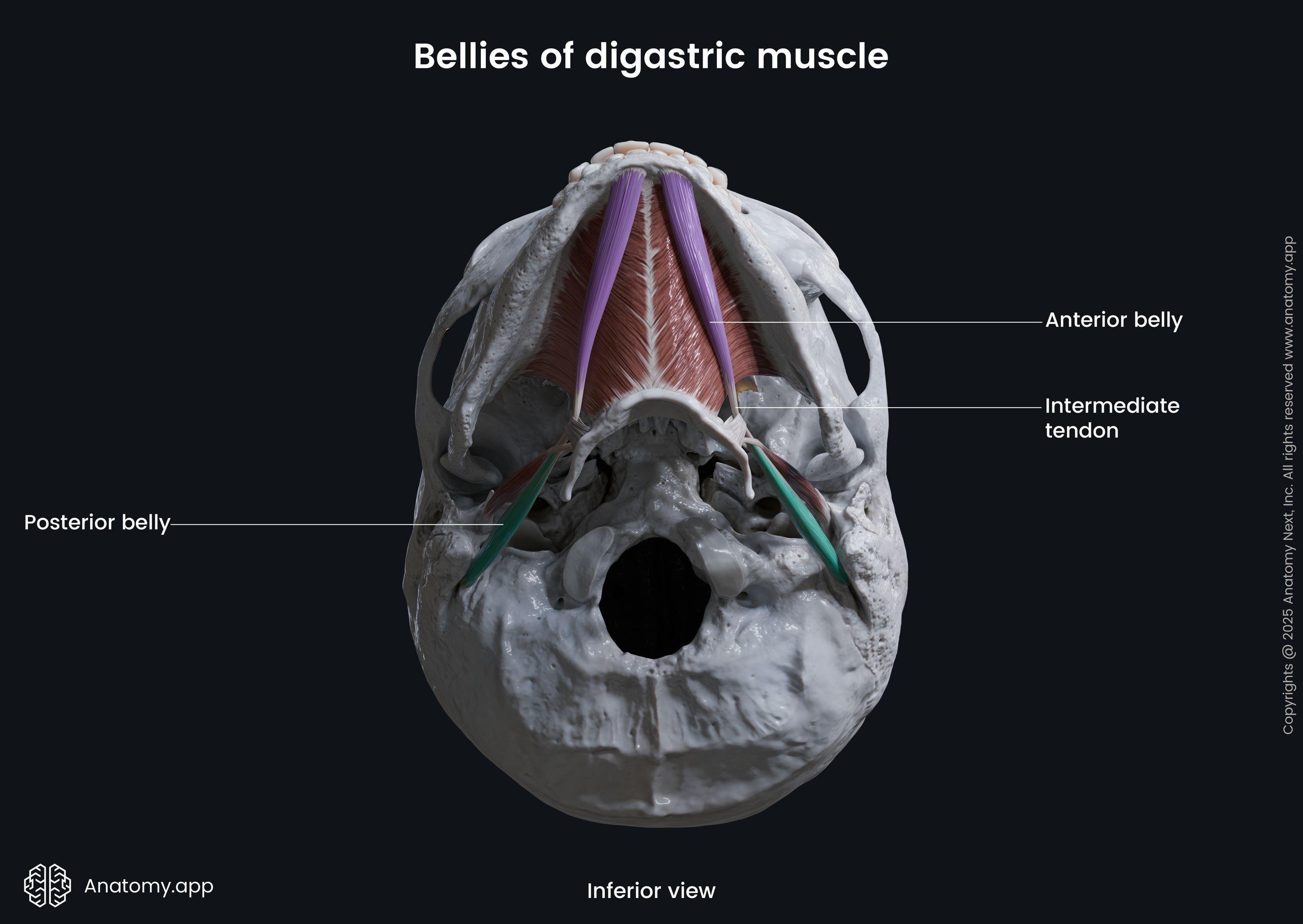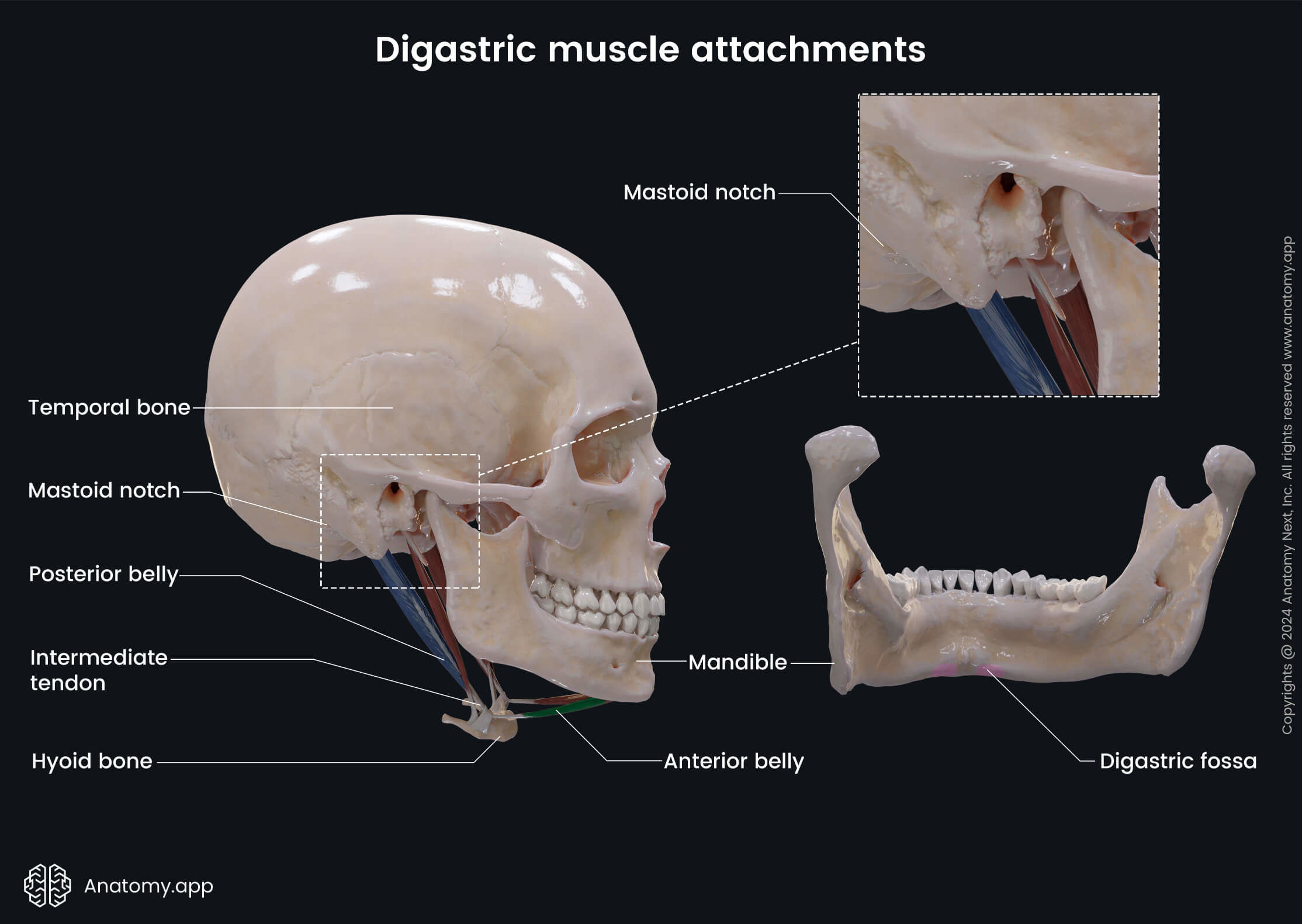- Anatomical terminology
- Skeletal system
- Joints
- Muscles
- Head muscles
-
Neck muscles
- Superficial neck muscles
- Scalene muscles
- Suprahyoid muscles
- Infrahyoid muscles
- Prevertebral muscles
- Suboccipital muscles
- Muscles of upper limb
- Thoracic muscles
- Muscles of back
- Muscles of lower limb
- Heart
- Blood vessels
- Lymphatic system
- Nervous system
- Respiratory system
- Digestive system
- Urinary system
- Female reproductive system
- Male reproductive system
- Endocrine glands
- Eye
- Ear
Anterior belly of digastric
The anterior belly of the digastric (Latin: venter anterior musculi digastrici) is one of two bellies composing the digastric muscle. The digastric is one of the muscles of the neck, and its other belly is known as the posterior belly. As the digastric muscle is located above the hyoid bone, it is classified as the suprahyoid neck muscle. It also belongs to the anterior neck muscles. The anterior belly is smaller than the posterior, and it develops from the first pharyngeal arch.



| Anterior belly of digastric | |
| Origin | Digastric fossa of mandible |
| Insertion | Hyoid bone via intermediate tendon |
| Action | Elevates hyoid bone, depresses mandible |
| Innervation | Mylohyoid nerve of inferior alveolar nerve |
| Blood supply | Facial artery |
Origin
The anterior belly of the digastric muscle originates from the digastric fossa located on the inner surface of the mandible.

Insertion
From the origin site, the anterior belly of the digastric passes downward and backward. Fibers of this belly form the intermediate tendon that attaches to the hyoid bone.
Action
Upon contraction, the anterior belly of the digastric muscle elevates the hyoid bone or depresses the lower jaw.
Innervation
The anterior belly of the digastric is innervated by the mylohyoid nerve, a branch of the inferior alveolar nerve. The latter nerve arises from the mandibular division of the trigeminal nerve (CN V3).
Blood supply
The anterior belly of the digastric muscle receives arterial blood supply from the facial artery - a branch of the external carotid artery.